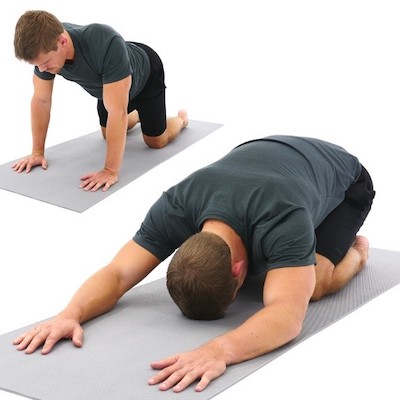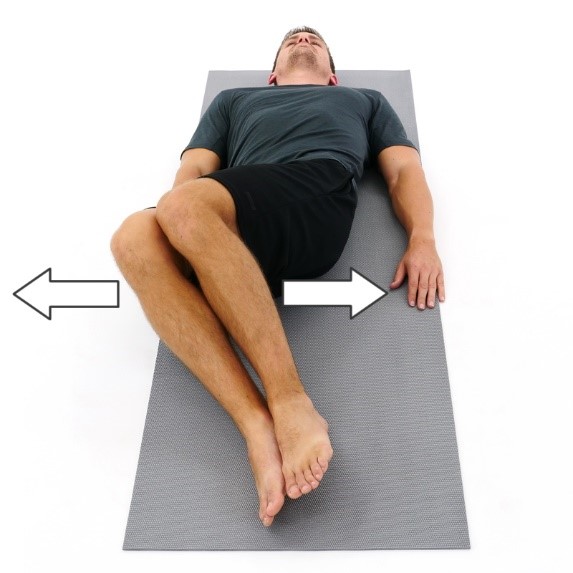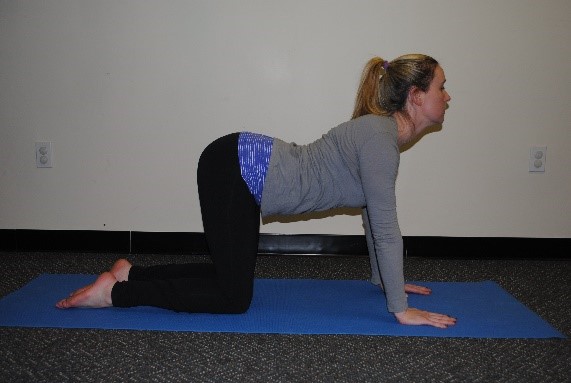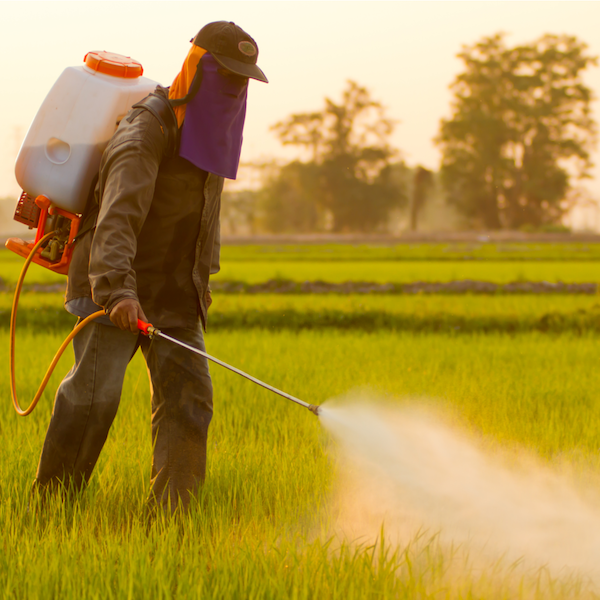Is It Menopause or Could It Be Heart Disease?
- Details
- Category: Health

Hot flashes, night sweats, unexplained fatigue. Most women recognize these as signs of menopause, but they might be surprised to learn that these ailments could also be signs of heart disease – the Number 1 killer of women.
“It’s important to understand that menopause doesn’t cause heart disease, but the risk certainly increases around this stage of life,” notes Dr. Shalini Bobra, a cardiologist with White Plains Hospital. “To further complicate matters, some common symptoms of a heart problem could mimic what we tend to think of as menopausal symptoms.”
Before menopause, the risk of heart disease is low in women. The reason? Estrogen is a friend to blood vessels, keeping them flexible and adaptable to blood flow. When estrogen levels decline as a result of menopause, the blood vessels lose some of that resilience, upping the risk of arteriosclerosis, a clogging of the blood vessels. In fact, an overall increase in heart attacks among women is seen about 10 years after menopause.
Know the Risks at Any Age
Women have their own unique set of conditions that predispose them to heart problems. Otherwise healthy women who sit too much, maybe as a result of being locked in during the pandemic, may be at greater risk of a heart attack. One study showed that having an autoimmune disease (rheumatoid arthritis, lupus, etc) doubles the risk of cardiovascular disease, due to chronic inflammation. Also, those who are dealing with ongoing states stress or depression – leading to elevated stress-hormones that can increase blood pressure – are also at risk for heart disease.
Get a Symptom Check
If you’re around the age of menopause (average age around 51), and have been noticing the following signs, take pause and consider consulting with a Cardiologist or Internal Medicine specialist:
Fatigue. It’s natural to feel more tired as you age, and it’s a common menopausal complaint. But if simple activities like carrying the laundry upstairs or walking out to the mailbox that were once a breeze are now suddenly difficult, this could be a warning sign.
 Dr. Shalini BobraSweating. Three-quarters of all women experience hot flashes during menopause. It’s worth mentioning to your physician if these sweats are associated with shortness of breath or chest pain, especially when you haven’t been exerting yourself or there doesn’t seem to be any real cause.
Dr. Shalini BobraSweating. Three-quarters of all women experience hot flashes during menopause. It’s worth mentioning to your physician if these sweats are associated with shortness of breath or chest pain, especially when you haven’t been exerting yourself or there doesn’t seem to be any real cause.
Chest Pain. While chest pain alone isn’t necessarily a menopause symptom, it’s worth mentioning that it is the most commonly ignored symptom by women who suffered a heart attack and then reflected back on what they experienced beforehand, according to a 2012 study by the University of Barcelona. Chest pain isn’t always the “grip your chest”; it could be just simple discomfort, pressure, or feeling that something isn’t right.
“The good news is that despite this long list of risk factors, eighty percent of cardiac events can be prevented–with small, simple daily changes,” says Dr. Bobra. “The first and foremost change would be to quit smoking. I tell my patients another simple step is to just move 30 minutes a day. Also, adopting a Mediterranean style diet focusing on greens and grains, legumes, and lots of fiber has proven to benefit the heart.”
Dr. Shalini Bobra is a cardiologist with White Plains Hospital Physician Associates, seeing patients at 99 Business Park Drive in Armonk. To make an appointment, call 914-849-7900.
Stretch to Increase your Flexibility
- Details
- Written by: Joanne Wallenstein
- Category: Health
 It isn’t a stretch to say experts recommend stretching before playing sports or exercising. But stretching isn’t only for athletes and fitness buffs, and it shouldn’t be reserved for before and after workouts. The truth is limbering up should be a part of your daily routine just as much as healthy eating and a good hygiene. Stretching offers many health benefits, especially as we age.
It isn’t a stretch to say experts recommend stretching before playing sports or exercising. But stretching isn’t only for athletes and fitness buffs, and it shouldn’t be reserved for before and after workouts. The truth is limbering up should be a part of your daily routine just as much as healthy eating and a good hygiene. Stretching offers many health benefits, especially as we age.
“Stretching helps to maintain range of motion, flexibility, and good posture and decreases the likelihood of injury during athletic activities,” says Adam Cohen, PT, DPT, a physical therapist with the Burke Rehabilitation Hospital and Manager of Outpatient Rehabilitation Services at White Plains Hospital. “Stretching can even help to improve balance and walking quality.”
To truly experience all the benefits, Cohen recommends stretching at least 10 to 15 minutes a day, starting as soon as you wake up. Stretching first thing in the morn¬ing can help decrease stiffness after lying in bed all night.
Here are four easy movements/stretches you can do in the morning before you start your day:
Lower Trunk Rotations
Gently drop your knees to one side and hold for 5-10 seconds. Repeat to the opposite side. Perform 10 times. Lower Trunk Rotations
Lower Trunk Rotations
Single Knee to Chest Stretch
Gently pull one knee towards your chest. Hold for 10 seconds. Perform 5 times with each leg.
Cat Camel Stretch
Begin on hands and knees. Alternate between arching your back (angry cat position) and lowering your stomach toward the ground (camel position). Hold each position for 5 seconds and repeat 10 times.
Child Pose or Prayer Stretch
Begin on hands and knees and slowly lower your buttocks towards your heels until a stretch is felt in the back and/or buttocks. Hold for 30 seconds and perform 3 times.
Cohen says there are a few rules of thumb to keep in mind: “Move to the point where you feel a gentle pull in your muscles rather than pain. Taking deep, relaxing breaths while you stretch will help you to relax and stretch a bit further with each repetition. Be sure not to bounce. Bouncing can actually tighten the very muscles you’re trying to stretch. Learning to stretch properly will come with time.” Cat-CamelAbove all, don’t begin any exercise program without consulting a phy¬sician first (yes, stretching is a form of exercise). And If any stretch causes a sharp pain, don’t continue it.
Cat-CamelAbove all, don’t begin any exercise program without consulting a phy¬sician first (yes, stretching is a form of exercise). And If any stretch causes a sharp pain, don’t continue it.
Photos and research courtesy of HEP2go.
Adam Cohen is a Physical Therapist with the Burke Rehabilitation Hospital and manager of Outpatient Rehabilitation Services at White Plains Hospital. To make an appointment, please call 914-681-1116.
 Single Knee Stretch
Single Knee Stretch

Paulin and Brouk Propose Legislation to Ban Pesticides at Summer Camps
- Details
- Written by: Joanne Wallenstein
- Category: Health
 Photo Credit: Shutterstock, Submitted by the Office of Amy PaulinThe following was written by Assemblymember Amy Paulin and Senator Samra Brouk:
Photo Credit: Shutterstock, Submitted by the Office of Amy PaulinThe following was written by Assemblymember Amy Paulin and Senator Samra Brouk:
Spring is here and parents are now beginning to plan summer activities, including signing their children up for camp. After long winter days of being indoors due to COVID-19, we know that the demand for summer camps will be higher than ever this year—and we should make the health and safety of the children attending those camps our top priority. We have sponsored a bill in the New York State Legislature (A.528/S.4478) prohibiting pesticide use at summer camps.
Camps should be held to the same standards as schools, where pesticides have been banned for the last decade. In 2011, New York’s Child Safe Playing Fields Act went into effect, which prohibits pesticide use on school and day care center grounds. As with the current law for schools, our bill allows for exceptions to be made in emergency circumstances, such as hazardous infestations. Our proposed legislation would require the same standards for children’s day and overnight camps.
Children are highly vulnerable to the health risks of pesticides. Developing bodies and brains are particularly at risk from exposure to pesticides, which have been linked to delayed cognitive development, learning disabilities, lower IQ, and attention deficit disorders, as well as to cancer and endocrine disruption. Children receive more exposure through air and skin contact relative to their body weight than adults and have less developed organs and immune systems to detoxify contaminants. When at summer camps, children spend many hours outdoors and on fields. Yet research shows that even minute amounts of exposure to pesticides can have long-term negative impacts on our children.
There are many healthy alternative approaches to lawn care. These include using natural fertilizers and choosing grasses and plants that are appropriate for a region and therefore can grow successfully without pesticide use. Well-chosen plants resist pests, and healthy soils grow dense turf that outcompetes weeds. Camps are just one locale where we can support natural growth systems and encourage a culture of healthy yard maintenance—both for our children and for the environment.
Current procedures with respect to pesticides do not always protect children from exposure. Warning labels on pesticides give time limits for keeping children off the grass but may fail to reflect a wide variation in the half-life of ingredients, which depend on weather and soil conditions. Once these chemicals come indoors on shoes or through windows, they may remain active for years. At camps in particular, children may walk on grass with bare feet and then enter swimming pools and other water bodies, where the chemicals may then be ingested.
We can take steps to significantly improve the safety of children’s environments. We can pass this legislation banning pesticide use in camps, as a strong first step. We have already taken the lead in enacting The Child Safe Playing Fields Act that bans their use around schools, and on playgrounds and athletic fields. There is every reason to use the same standards for the grounds and fields our children are playing on all summer long.
Children and camps need grassy lawns for games and sports, as well as areas where children are free to discover nature. Over the last decade, it has been shown that New York State’s school pesticide ban works. Let’s put the same protections in place for camps. Please support our Camp Pesticides bill A.528/S.4478 so that we can eliminate pesticides from our children’s summer camp experience and instead give them one that is fun, healthy, and safe.
Overcome Obesity With Bariatric Surgery: Weight Loss Surgery Can Elevate The Quality Of Your Life
- Details
- Written by: Joanne Wallenstein
- Category: Health
 The obesity rate for adults in the U.S. currently stands at 42.4%, the first time the national rate has passed the 40% mark. Many who have struggled with weight loss for years have tried multiple diet and exercise plans and seen some of their excess weight temporarily disappear, only to see it quickly return.
The obesity rate for adults in the U.S. currently stands at 42.4%, the first time the national rate has passed the 40% mark. Many who have struggled with weight loss for years have tried multiple diet and exercise plans and seen some of their excess weight temporarily disappear, only to see it quickly return.
A Bariatric Surgery Success Story
Thomas Pallogudis weighed 466 pounds, and as a result his overall health suffered. He was a diabetic, had high blood pressure and took 14 pills a day to treat various medical issues. After being evaluated by Dr. Philip Weber, Director of the Division of Minimally Invasive Surgery, Robotics and Bariatrics at White Plains Hospital, Pallogudis was deemed an ideal candidate for bariatric surgery.“Bariatric surgery, more commonly known as weight-loss surgery, is considered a last-resort option for patients with a longstanding history of obesity,” says Dr. Weber. “The ideal candidate has tried multiple medical or diet plans without long-term success.”
Pallogudis says he got a new lease on life after his procedure in October 2018. “The surgery saved my life. I’ve lost 240 pounds and my blood sugar, blood pressure and cholesterol are back to normal, without having to take medication,” says Pallogudis. “The process has helped teach me healthy eating, allowing me to become more active. Most importantly, I feel better.”
Bariatric Options
The most common bariatric procedure is sleeve gastrectomy, in which a surgeon removes 80% of the stomach, shaping what remains into a tubular pouch resembling a banana. Patients go home about 24 hours after the surgery and are back to work and normal activity within a week. On average, patients can expect to lose more than 50% of their excess weight.
Gastric bypass surgery is slightly more involved but achieves a significant weight loss of 60-80%. “A smaller stomach is also created in this procedure, but in addition, they reconfigure the small intestine to alter path that food takes through the body during digestion,” says Dr. Weber. “This procedure requires a short hospital stay, but most patients are back to work in a few weeks.”
In both cases, the smaller stomach holds less food, absorbing fewer calories. The surgery also suppresses hunger and makes the patient feel full.
“We encourage our patients to stay in close contact with us, so that we can continue to support them, and navigate through any issues that may come up, especially in the first year,” says Dr. Weber. “We’re not just performing surgery; we’re creating a partnership. We want them to succeed as much as they do.”
Dr. Philip Weber is the Director of the Division of Minimally Invasive Surgery, Robotics and Bariatrics at White Plains Hospital. To make an appointment, please call 914-948-1000.
SVAC Offers EMT Training in Scarsdale
- Details
- Written by: Joanne Wallenstein
- Category: Health
 Scarsdale Village Ambulance Corps is offering courses in emergency medicine. Here are the details about the courses and how to enroll:
Scarsdale Village Ambulance Corps is offering courses in emergency medicine. Here are the details about the courses and how to enroll:
Scarsdale Volunteer Ambulance Corps is offering EMT-Original courses which prepares individuals as entry level Emergency Medical Technicians in career and volunteer positions within the State of New York and nationally through the National Registry.
The following EMT-Original courses are available:
May 5th-July 31st – Meets Mondays and Wednesdays 6:30pm to 10:00pm and some Saturdays or Sundays 9:00am to 3:00pm – This course offers a combination of on-line independent learning with on-line and in-person real- time learning. All skills classes are in person.
May 6th–July 24th – Meets Tuesdays and Thursdays 6:30pm to 10:00pm and some Saturdays 9:00am to 4:00pm – This course offers a combination of on-line independent learning with on-line and in-person real-time learning. All skills classes are in person.
June 18th–July 23rd – Meets Monday through Friday 8:30am to 3:00pm – This course offers a combination of both on-line independent and in-person learning environments. All skills classes are in person.
September 2nd-November 13th – Meets Tuesdays and Thursdays 6:30pm to 10:00pm and some Saturdays 9:00am to 4:00pm - This course offers a combination of on-line independent learning with on-line and in-person real- time learning. All skills classes are in person.
Course tuition is $700.00, which is reimbursable by NYS DOH if you are an active member of an approved agency and you pass the NYS Written Exam. Materials, on-line access and textbooks are additional.
Space is limited. Tuition payment by check or money order is due within five days of enrollment.
For more information,visit www.scarsdalevac.com and click on Courses. Minimum age requirement is 17 years old.
If you have any questions, please call 914-722-2288 or e-mail [email protected]










